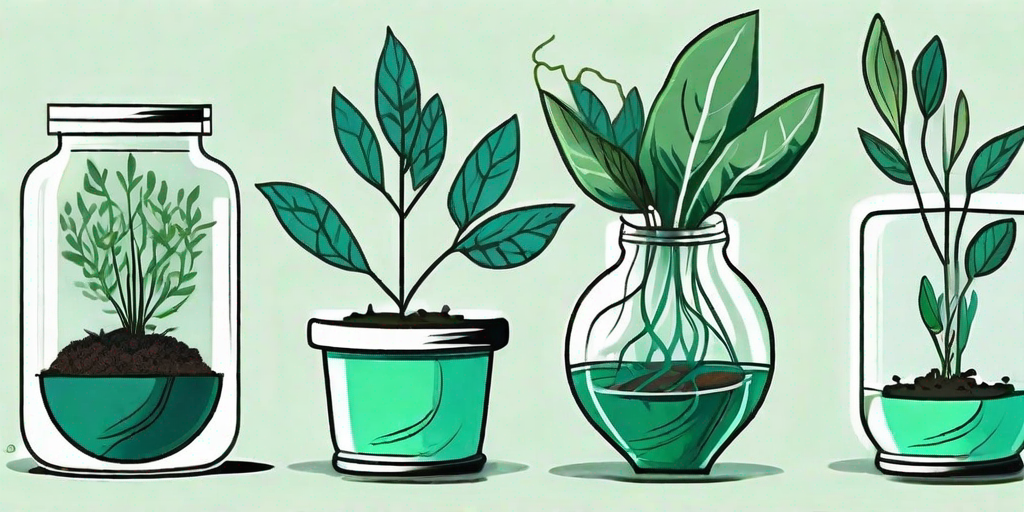
Ah, the Boston Fern. A lush, leafy symbol of hospitality and warmth, an indoor jungle's crowning glory. But what happens when your fern starts to look less like a tropical paradise and more like a sad, wilted salad? Fear not, dear plant parent. We're here to help you navigate through the wilderness of Boston Fern care.
Understanding Your Boston Fern
Before we dive into the nitty-gritty of fern care, let's take a moment to understand our green friend. The Boston Fern, or Nephrolepis exaltata, is a type of sword fern native to tropical regions. It's known for its arching fronds and feathery leaves, and it's a popular choice for indoor and outdoor gardening.
However, despite its popularity, the Boston Fern can be a bit of a diva. It has specific requirements for light, humidity, and watering, and it won't hesitate to throw a fit (in the form of brown leaves and shedding fronds) if these needs aren't met.
Common Boston Fern Problems and Solutions
Now that we've gotten to know our fern a little better, let's tackle some common Boston Fern problems and their solutions. Remember, every plant is unique, so what works for one fern might not work for another. It's all about understanding your plant's needs and adjusting your care routine accordingly.
Brown Leaves
One of the most common Boston Fern woes is brown leaves. This can be caused by a variety of factors, including low humidity, overwatering, and poor light conditions. To combat this, try increasing the humidity around your fern (more on this later), adjusting your watering schedule, and making sure your fern is getting enough indirect light.
Remember, Boston Ferns are native to tropical regions, so they're used to high humidity and indirect light. If you're keeping your fern in a dry, dark corner, it's time to rethink your plant placement.
Shedding Fronds
Another common issue is shedding fronds. This can be a sign of stress, often caused by changes in temperature or humidity. If your fern is shedding, try to identify any recent changes in its environment. Have you moved it to a new location? Has the weather changed? Once you've identified the cause, you can adjust your care routine to help your fern recover.
Keep in mind that some shedding is normal, especially during the winter months. However, if your fern is shedding excessively or if the shedding is accompanied by other signs of stress (like brown leaves), it's time to take action.
How to Care for Your Boston Fern
Now that we've covered some common Boston Fern problems, let's talk about how to care for your fern. Here are some tips to keep your fern looking lush and healthy.
Light
Boston Ferns prefer bright, indirect light. Too much direct sunlight can scorch the leaves, while too little light can cause the fronds to become thin and sparse. Try placing your fern near a north or east-facing window, or in a spot that gets plenty of filtered light.
If you're struggling to find a spot with the right light conditions, consider using a grow light. These can provide your fern with the light it needs, without the risk of sunburn.
Water
When it comes to watering, Boston Ferns like to stay moist but not soggy. Overwatering can lead to root rot, while underwatering can cause the fronds to dry out and turn brown. The key is to water thoroughly, then let the top inch of soil dry out before watering again.
Remember, your fern's watering needs will vary depending on the season, the size of the plant, and the conditions in your home. Always check the soil before watering, and adjust your watering schedule as needed.
Humidity
As we've mentioned, Boston Ferns love humidity. If your home is on the dry side, there are several ways to increase the humidity around your fern. You can mist the leaves regularly, place the pot on a tray of pebbles and water, or use a humidifier.
Another option is to group your fern with other plants. Plants naturally release moisture into the air, so grouping them together can create a mini humid environment. Just make sure your fern isn't crowded or overshadowed by its plant buddies.
FAQs
- Why are my Boston Fern's leaves turning yellow?
Yellow leaves can be a sign of overwatering or poor nutrition. Check your watering schedule and consider using a balanced fertilizer to boost your fern's nutrient intake.
- Can I prune my Boston Fern?
Absolutely! Pruning can help maintain your fern's shape and remove any dead or damaged fronds. Just make sure to use clean, sharp scissors to avoid spreading disease.
- Can Boston Ferns grow outside?
Yes, but they're sensitive to cold temperatures. If you live in a region with harsh winters, it's best to bring your fern indoors during the colder months.
Conclusion
So there you have it, folks. The ins and outs of Boston Fern care. Remember, every fern is unique, and what works for one might not work for another. The key is to pay attention to your fern's needs and adjust your care routine accordingly.
With a little patience and a lot of love, you can transform your wilting fern into a lush, leafy paradise. So roll up your sleeves, put on your gardening gloves, and get ready to tackle those Boston Fern woes head-on. Happy gardening!















